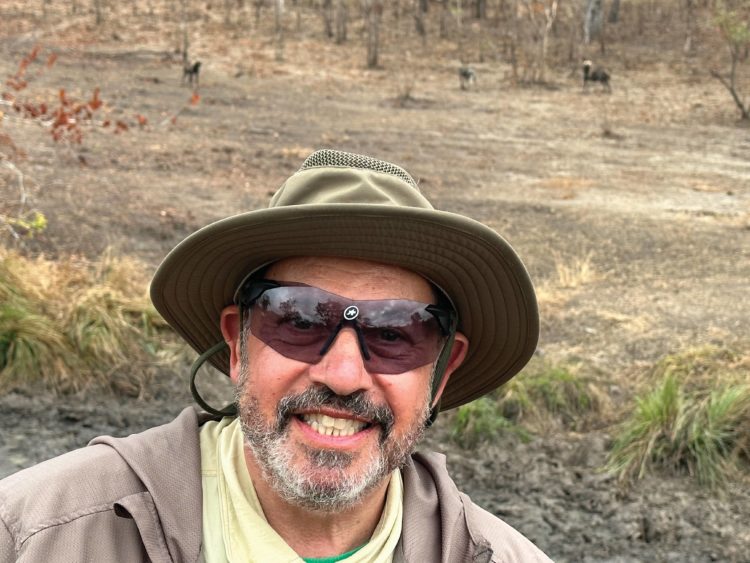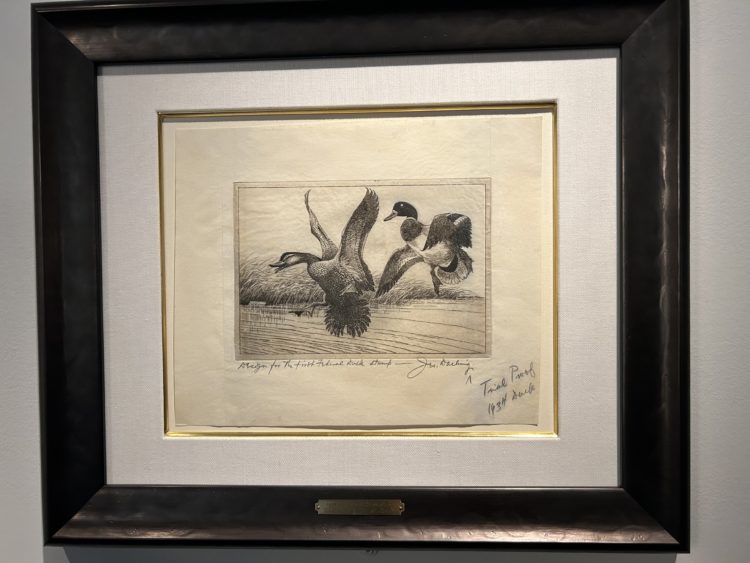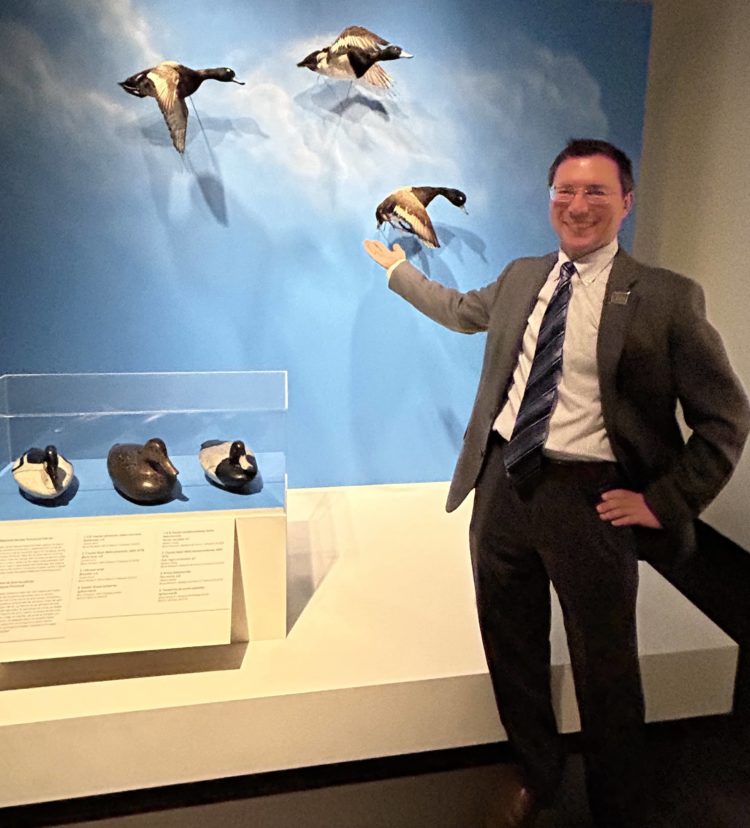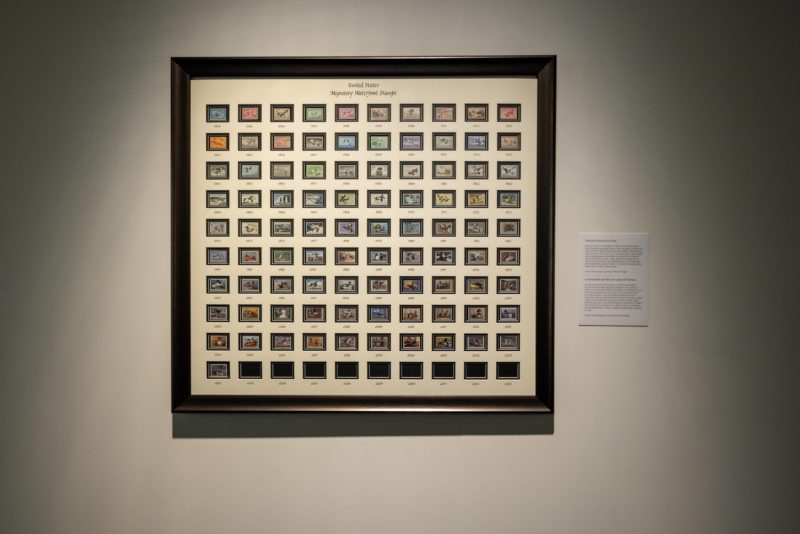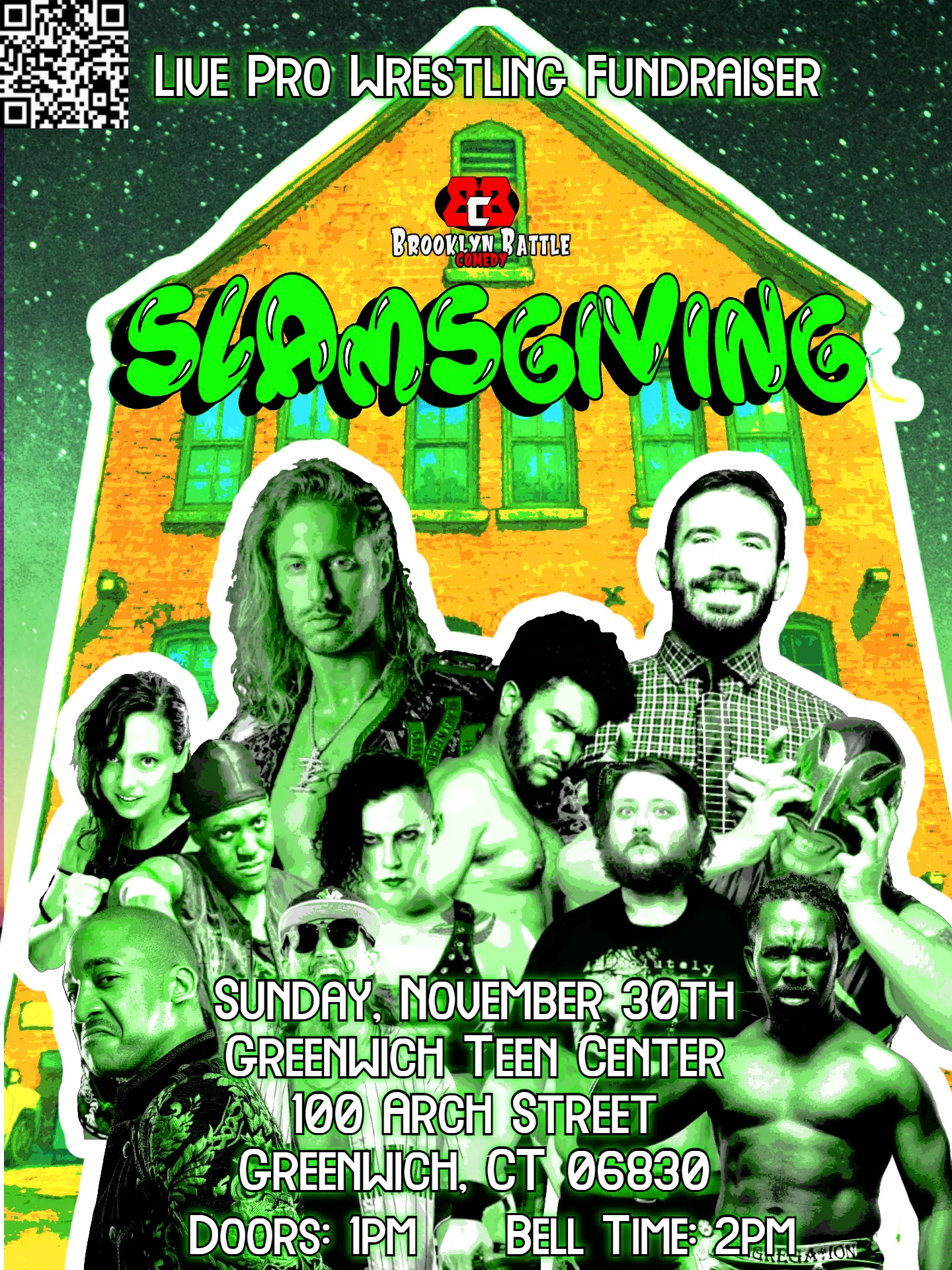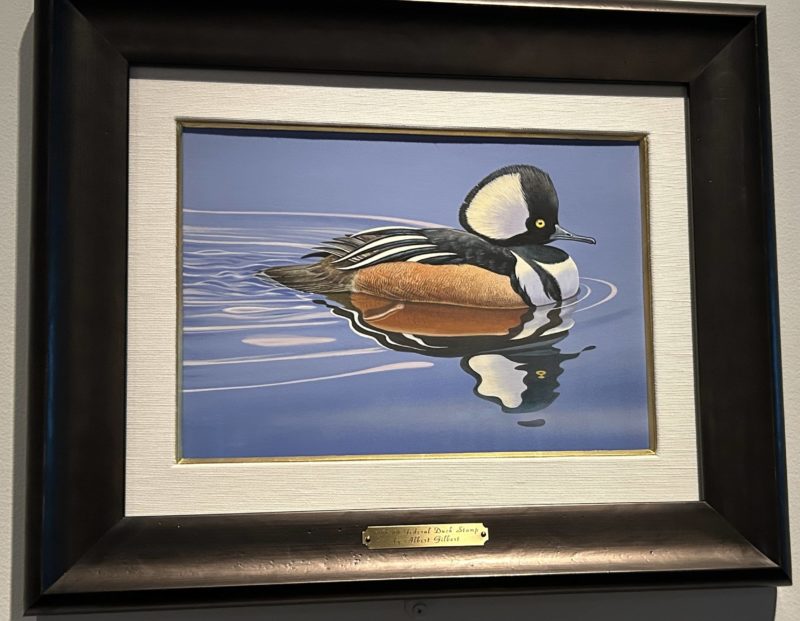
By Anne W. Semmes
Next Thursday and Friday the Bruce Museum is likely to become a mecca to those with an interest in the artistic depictions of waterfowl, with the Museum’s first-time hosting of the live Federal Duck Stamp Art Contest. Over two days five expert judges will examine hundreds of entries to select the winning duck painting to become the 2025 Federal Duck Stamp. And the five eligible species featured by the artists this year are the Northern Shoveler, Brant, Greater Scaup, Spectacled Eider and Hooded Merganser.
So, how is it that a three-inch square Duck Stamp, debuting in 1934, has led to the most successful conservation program in our nation’s history, with some six million acres of critical habitat being conserved in federal refuges in almost every state, including in Connecticut the Stewart B. McKinney National Wildlife Refuge, with over a third of the refuge purchased with Federal Duck Stamps?
The present Bruce Museum exhibit spells it out clearly with its title “Conservation Through the Arts, Celebrating the Federal Duck Stamp.” And, who better to explain the Federal Duck Stamp program than Greenwich’s noteworthy Duck Stamp collector, Richard “Richie” Prager, whose collection of 70 winning duck paintings, now donated to the Bruce, grace the exhibit which opened last week. We caught up amazingly with Prager on his travels in the Republic of Congo (also known as Congo-Brazzaville)!
Seems he was inspired by his mom being a stamp collector. “She saw me trying to collect every stamp under the sun, and she told me I needed to stick with it,” he shares. And he’d arrived in 1976 at the legal age of 16 plus able to buy a duck stamp needed “as part of the licensing for water fowling.”
“If you think of the duck stamp program,” he continues, “there’s really three legs to the stool. There’s the hunter who has to buy a stamp, there’s the stamp collector, and then there’s the artists themselves. And the artists in many ways are the unsung heroes.”
Fast forward to 2012, having long heeded his mother’s counsel with his burgeoning duck stamp collection, when he was contacted by one of his stamp dealers. Would he be interested in purchasing 18 winning duck stamp artworks? Not really, he thought – he was a stamp collector.
But, thinking again, he recalls, “I realized there was a greater challenge in collecting the original [artwork] winners…And with that original purchase I had 18, and then I bought six more…And that just became my obsession to collect the original winning artwork.”
Fast forward to Covid time. “It was a lot of blessings and a lot of pain,” says Prager. “And one of the blessings for me was I always knew I was going to donate this, but I realized why not do it earlier in my life and enjoy the public seeing it. And most importantly, to use it [that donation]) as a conservation education tool. The more people that really understand this wonderful conservation program, the art competition, hopefully everyone goes out and buys a duck stamp for $25, with 98 percent going to conservation. That is my message.”
And thank you to Dr. Daniel Ksepka, the curator of the Duck Stamp exhibit, for having connected this reporter with Prager in the Congo on Ksepka’s iPhone. Ksepka’s preceding tour through the art-filled exhibit provided the history behind the creation of the Duck Stamp.
“Let’s say it’s the year 1800,” he tells, “You go out with your shotgun to shoot a duck or two for dinner for your family…no problem. At the turn of the century… people are forming dense population aggregates in cities. And so now you can hunt with this punt gun…You can kill
a hundred birds with one shot…And this was causing huge depletions of duck populations.” Count too the dust bowl conditions leading to drying up marsh lands where ducks like to feed.
Enter Ding Darling, political cartoonist, “agitating for protections.” “And FDR said to him, ‘If you care so much about the ducks, you’re in charge,’ and made him director of the Bureau of Biological Survey, a forerunner of the US Fish and Wildlife Service. He came up with a lot of different regulations to help protect birds and more responsible hunting…And all of this helped the populations rebound.”
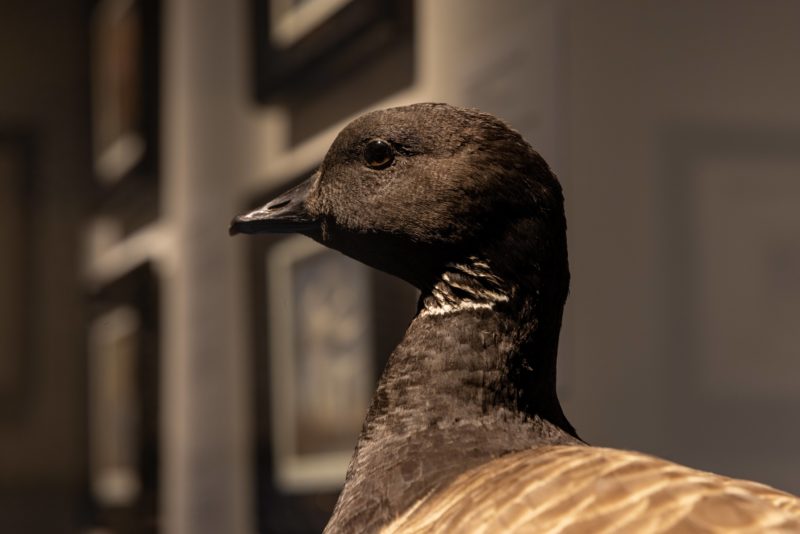
“And he actually designed the first duck stamp himself,” said Ksepka. “Basically working all day, all night, he had stacks of shirts ready to go if he needed to sleep on the floor. So, he had the cardboard thing they’d stiffen the collar with…He drew a little sketch of a duck on it…Someone from the Bureau of Engraving and Printing took it and made it into the first stamp without him even approving it…And that’s how the first duck stamp came to be.”
Thus, today with the Duck Stamp, said Ksepka, “Hunting is much more regulated. And equally importantly, that money goes to conservation.” So, with the price of a stamp rising from a dollar in 1934 and now $25, “They haven’t raised the price. It’s just gone up with inflation. And the surge is still there for buying the stamp. What’s funny, they sell about one and a half million of these stamps a year, and only a little more than half are bought by people who intend to use them to hunt.”
“A lot of people buy them for three other reasons,” he shares. “They just want to support conservation; It gets you in free into any National Wildlife Refuge that charges entry fee; And three, probably the most important is people collect them. There are coin collectors, comic book collectors, then there’s a community that loves these stamps. And getting a complete collection in mint condition or with rare errors or signed stamps is very important to people.”
Addressing the upcoming Duck Stamp Art Contest, Ksepka shares that it was in 1950 that the artwork design contest was opened to the public. “Anyone in the United States could submit a picture, and the winner would be on the stamp.” He adds, “It is the only art contest that is run by the federal government.” And when the judges look at the art, “it’s all anonymous.”
And that winning artwork brings more than just being on next year’s duck stamp. “The only prize you get is a set of 25 stamps signed by the Secretary of Interior. So, do the math, at $25 each, it’s a little more than a thousand dollars, but it’s the Super Bowl of wildlife art.”
Ksepka continues, “If you win this, you can expect to sell thousands of prints. You can license your image. You’ll be very well known. You can sell your other artwork.” Back in the 1970’s and 1980’s he tells, “They called it sometimes the million-dollar duck, because you can expect to issue a series of 5,000 prints and sell them at a couple of hundred dollars each, or a couple thousand dollars for the really high-end ones. So, it’s such an important accomplishment for a wildlife artist.”
“The more people that really understand this wonderful conservation program, the art competition, hopefully everyone goes out and buys a duck stamp for $25, with 98 percent going to conservation.” Richie Prager.
The Bruce Museum, currently featuring an historic exhibit of the Federal Duck Stamp program, to host a live Federal Duck Stamp Art Contest choosing the winning artwork to become the 2025 Federal Duck Stamp.
